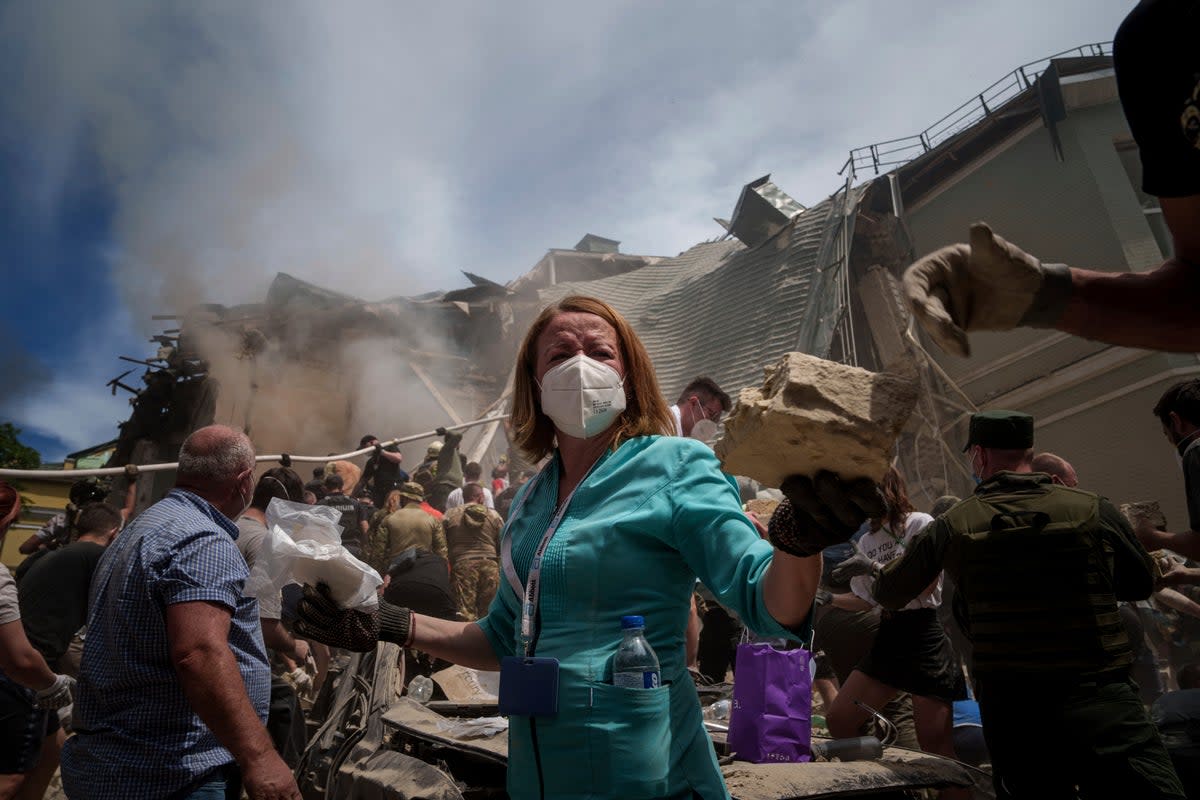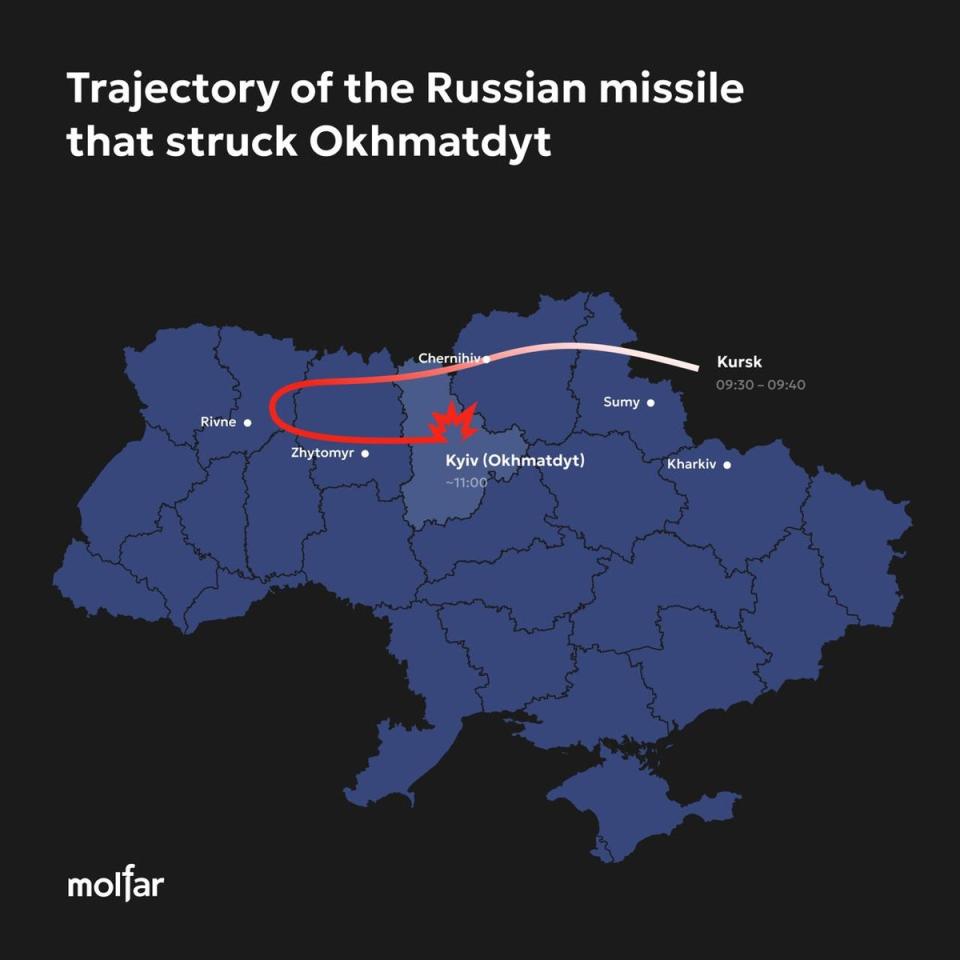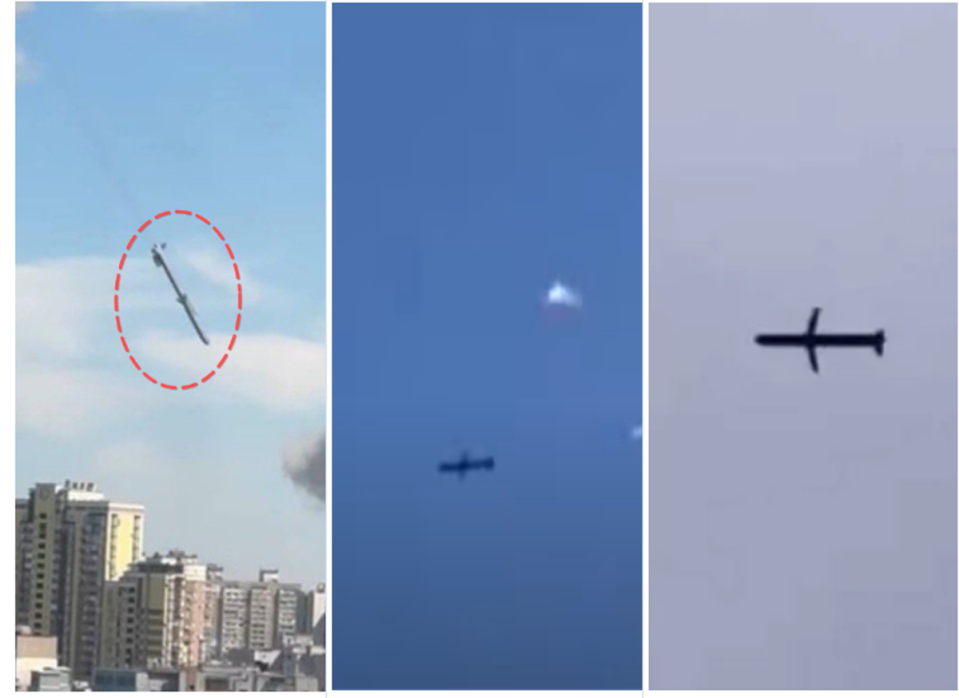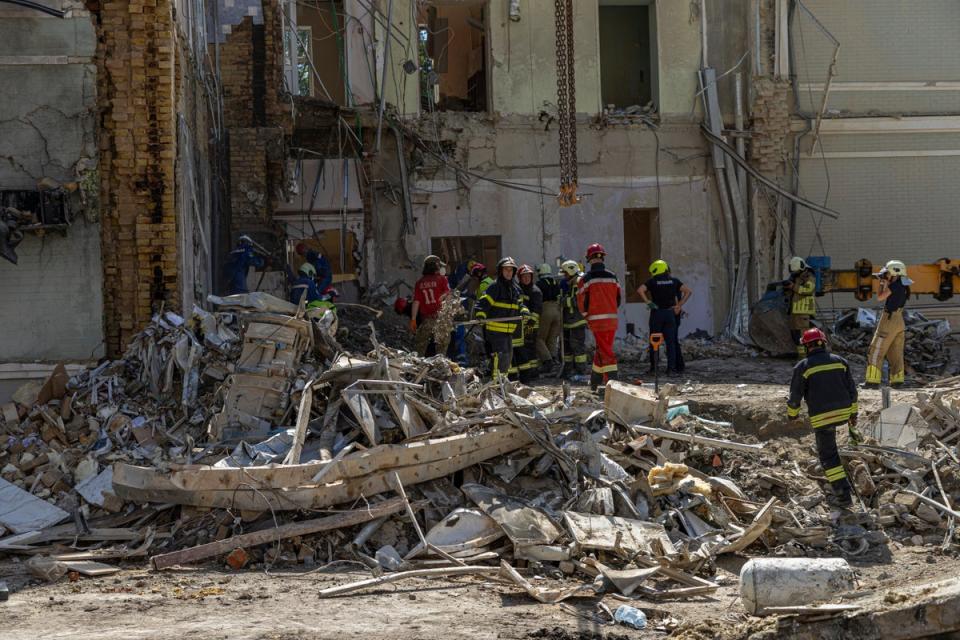Kyiv children’s hospital hit by Russian missile and not Ukrainian air defence, private investigators say

Russian forces used a Kh-101 cruise missile to attack the Kyiv City Okhmatdyt Children’s Hospital on Monday, a private Ukrainian investigation agency has claimed.
The hospital was struck multiple times, including by the Kh-101 which hit the Oncology department, according to the investigation agency called Molfar.
Russia has denied attacking the hospital and claimed that civilian buildings in Kyiv were struck by debris from falling Ukrainian air defence missiles.
The Okhmatdyt Children’s Hospital is Ukraine’s largest paediatric facility, treating thousands of patients daily.
Molfar said the missile that hit the hospital had a typical descending trajectory before impact and showed no visible damage, ruling out prior engagement by air defence systems. The trajectory indicated it came from Kursk in Russia, flew over Chernihiv in Ukraine’s north to Rivne and then turned towards Kyiv to strike the hospital region.
The shape of its body and tail and the location of its wings as seen in the video of the attack resemble Kh-101 and not a Ukrainian NASAMS air defence missile, as claimed by Russia, Molfar told The Independent.

They shared photos comparing the two missiles, pointing out that NASAMS does not have wings like Kh-101. They also noted the visible turbojet engine under the missile’s hull in the photos which matches the frame of a Kh-101.
Missile fragments recovered by Ukraine’s security service from near the hospital, including a tail section with serial number and the rudder, were also identical to Kh-101.

The United Nations Human Rights Monitoring Mission in Ukraine also said the hospital was likely directly hit by a Russian missile.
“Analysis of the video footage and an assessment made at the incident site indicates a high likelihood that the children’s hospital suffered a direct hit rather than receiving damage due to an intercepted weapon system,” Danielle Bell, head of the mission, was quoted telling a Geneva press briefing via video link from Kyiv by Al Jazeera.
She added that her team, who visited the site on Monday, could not make a final determination but the missile appeared to have been launched by Russian forces.

The hospital was struck during a series of daytime attacks across Ukraine, which killed 41 people and wounded over 150.
The attacks were carried out by four separate Russian military divisions, Molfar’s communications head Daria Verbytska said, adding that at least 95 officers were suspected to be involved.
Russian military bloggers have claimed that their forces targeted the Artem machine building plant 1.6km north of the children’s hospital and not the hospital. Some Russian missiles did indeed hit the Artem plant during the strike.
Oleksandr Musiienko, a military and legal analyst, said independent investigations confirming the Russian missile hit on the hospital are accurate and in line with Kyiv’s own assessment.
“Russia has a history of using Iskander-M ballistic missiles and Kh-101 cruise missiles on Ukrainian civilian targets through the course of its fullscale invasion of the country. The photos show the nose and the tail are consistent with the Kh-101’s design,” he told The Independent.
“We can see on photo and video that the Russian missile has a feature typical only of Kh-101. The engine on the back of the missile.”
Anything else being floated by Russian sources is propaganda, he said.


